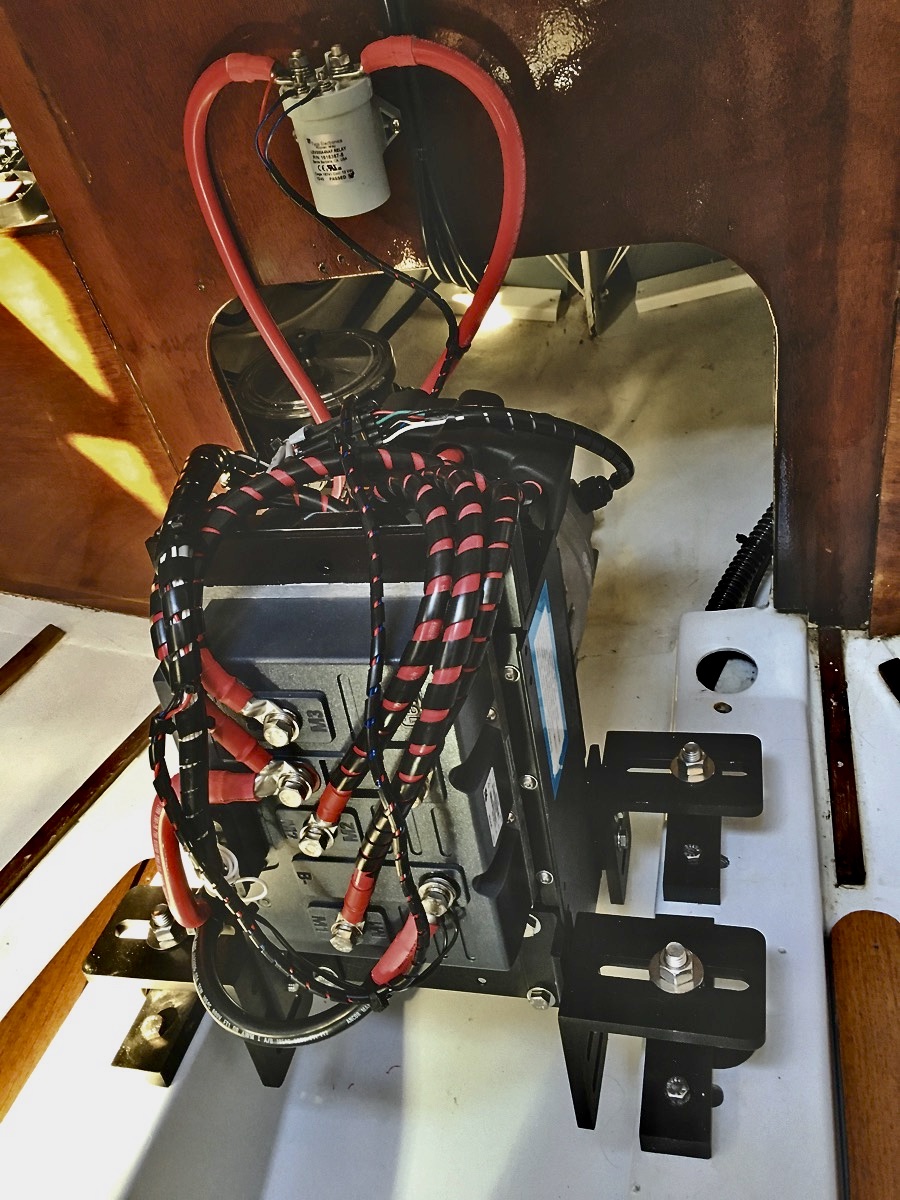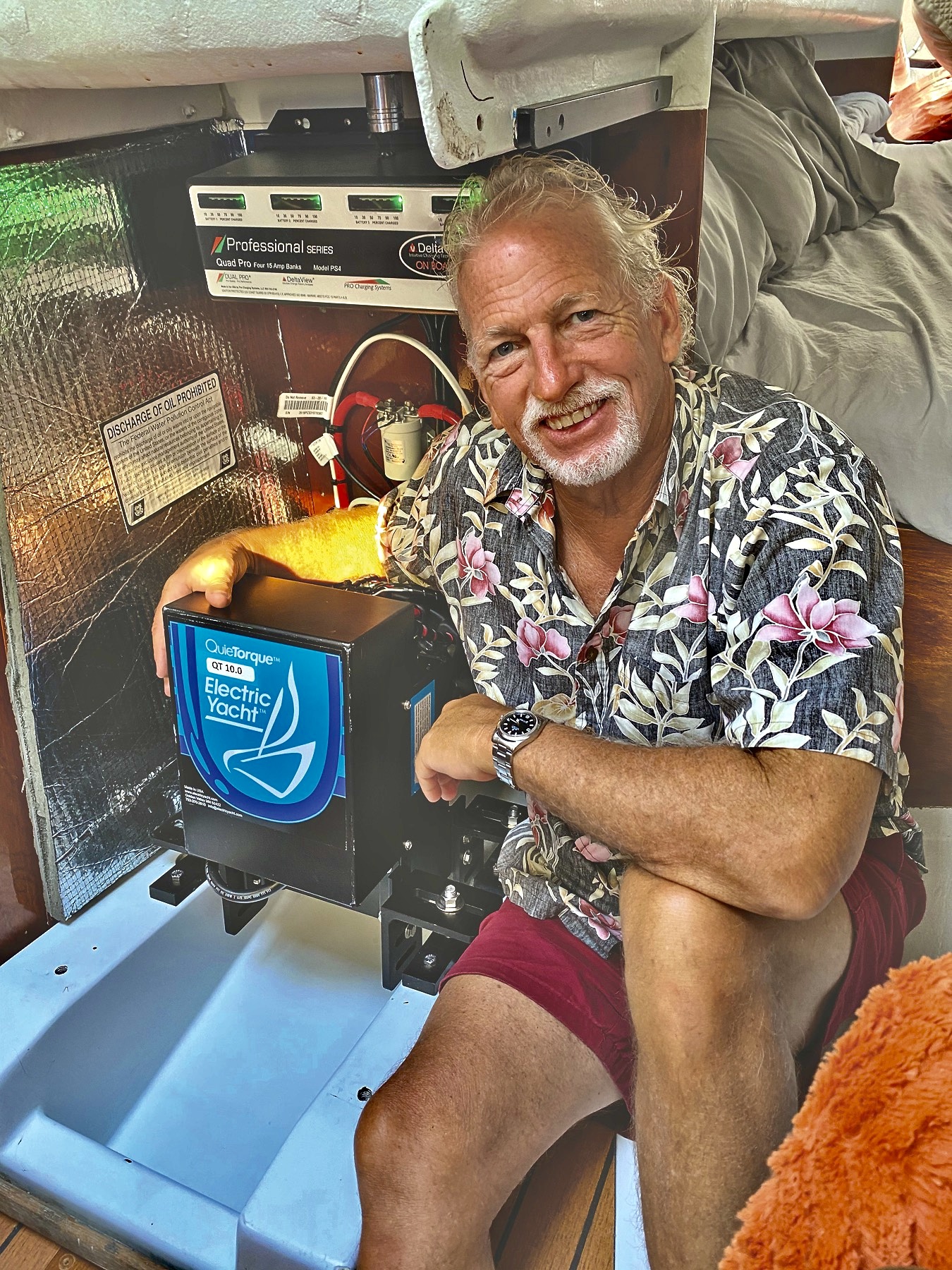
Euphoria and Electric Propulsion
David Smyth’s Olson 40 Euphoria shows us the promise and possibilities of electric auxiliary propulsion on a sailboat.
David is president of the Westlawn Institute of Marine Technology, and younger brother of Randy Smyth, two-time Olympic medal winner and Sailing Hall of Fame inductee. David also wrote the software for the Mars Rover missions at the Jet Propulsion Laboratory, so technical decisions on his personal sailboat are not made willy-nilly.
With a diesel engine that was not only unreliable but leaked and stank, David faced an expensive and lengthy rebuild or re-power. After some research, and a look at the practicalities of his sailing style, David opted to chuck the whole thing and go electric. Taken as a whole, going electric is a great jump toward simplification, but it means changing several of the boat’s other systems, beyond just the propulsion system. We’ll get more into the nuts and bolts of his conversion in a subsequent article, and for now discuss the philosophy and practice of electric propulsion.
First, toss the old diesel. This means no more engine, tanks, fuel lines, oil, oil filters, fuel filters, exhaust system, vents, fill pipes, attendant through-hulls, or any of the claptrap of owning and maintaining a diesel engine. In its place goes a much smaller 10-kilowatt electric motor from Electric Yacht.

Engine compartments on sailboats are often filthy. Various petroleum products mix with fan belt dust, paint flakes and bilge water to form a stinky mess. When you go electric, all of this goes away. Electric is clean. So far, a great win for simplicity and better smells.
The next benefit is silence. The electric propulsion system is barely audible, meaning the loudest noise David is likely to hear during a cruise is a flogging sail or a crewmember’s voice. No chugging engine, no exhaust, less vibration. And no warm-up time: An electric motor is ready to go full speed right from the get-go.

Lead-acid batteries are not good at delivering large currents, then repeating the task regularly after deep discharges and recharges. Lithium-ion batteries do this much better, so enter the lithium-ion battery bank.
David went with a 5-kilowatt bank, which is about the battery capacity on a sailboat of this size without electric propulsion. The batteries supply enough to motor for just over five hours, or 30 miles, before the batteries are nearly dead. This same battery bank must power everything else aboard, so he can’t motor much if he wants to keep the beer cold.
Read more about David’s electric propulsion system in this month’s Latitude 38.

Great idea! We love our electric motor on the dinghy, but not sure we’d be ready for it on the sailboat.
I would love to hear more about the Lithium batteries used. Looking forward to that upgrade when they are more cost effective and bullet proof from a fire standpoint.